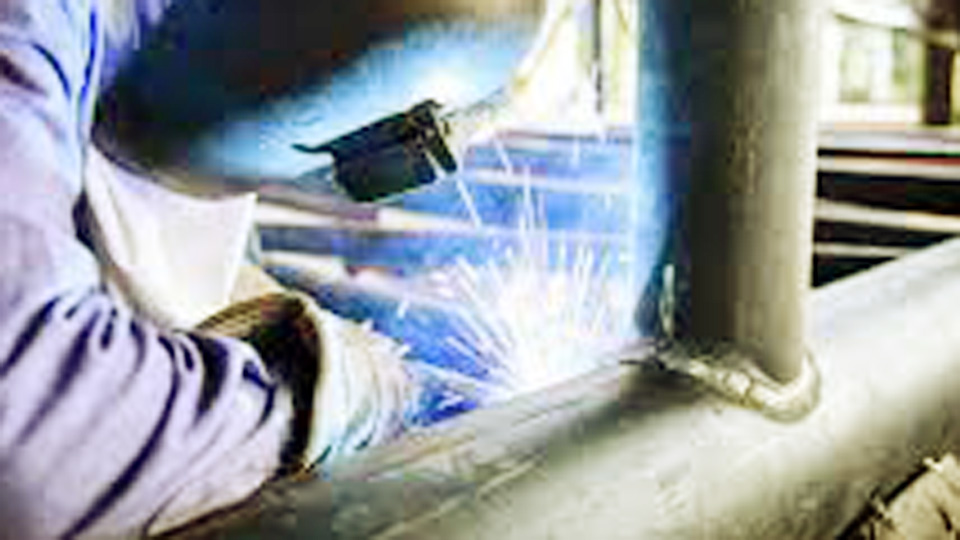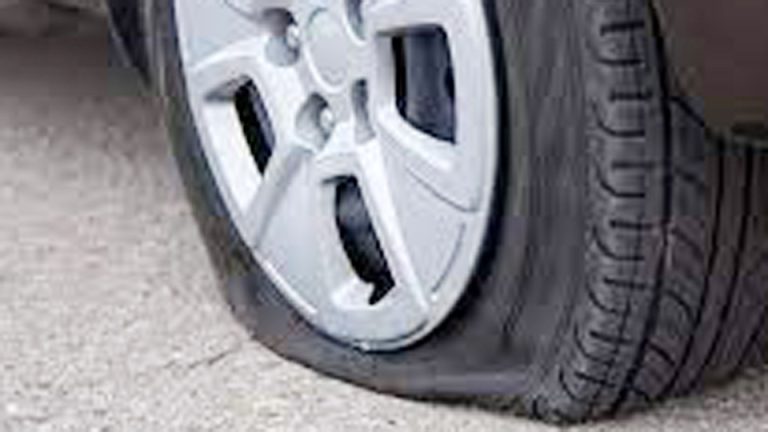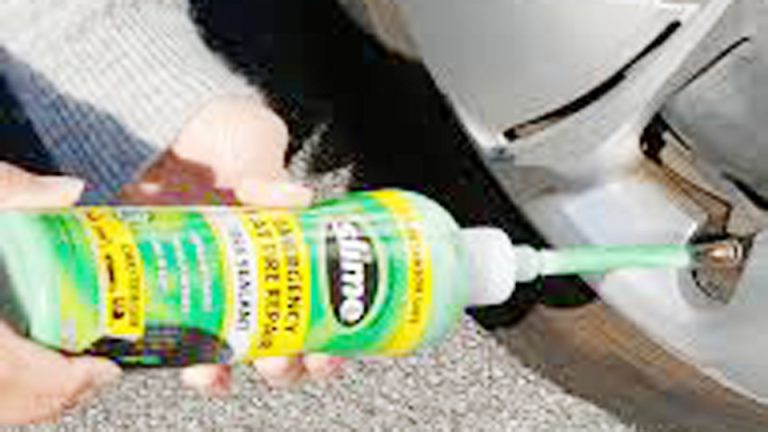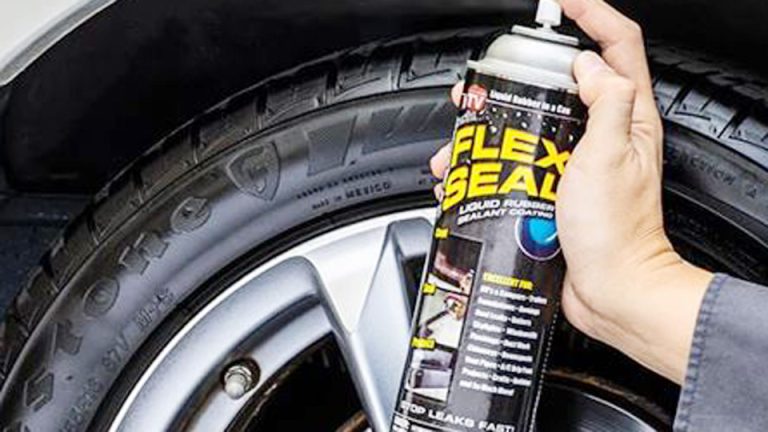Yes—it absolutely can. Whenever someone asks me “Can Driving on a Flat Tire Damage Your Car?”, I always tell them that even rolling a short distance on a flat can cause problems you don’t expect. A flat tire isn’t just an inconvenience—it changes the way your car sits and moves, putting extra strain on parts that were never meant to handle it. I’ve seen flats destroy wheel rims, bend suspension components, and even damage brake lines when drivers kept going “just a little farther.”
The tire itself will usually be beyond saving if you drive on it flat, since the sidewall gets crushed and torn apart against the rim. On top of that, your steering and handling suffer, making the car unsafe to control. In my garage, I’ve had customers come in hoping for a quick patch, only to find out they now need a new tire and a replacement wheel.
In this guide, I’ll break down what happens to your car when you drive on a flat, the risks involved, and what you should do instead if you ever find yourself with one on the road.

Image by harristirecompany
Why Driving on a Flat Tire Is a Bad Idea
A tire goes flat when it loses air pressure, usually from a puncture, valve stem leak, or even just gradual wear. In my shop, I’ve pulled nails, screws, and even shards of glass out of tires that drivers didn’t notice until it was too late. But why does driving on it matter? Safety first—it drastically reduces your control, increasing the risk of accidents. Performance tanks as the car pulls to one side, and fuel efficiency? Forget it; you’re dragging dead weight.
From a cost perspective, ignoring a flat can turn a $150 tire replacement into a $1,000 nightmare involving rims and alignments. Reliability suffers too, as uneven wear accelerates problems in connected systems. I’ve had customers roll in with what they thought was “just a flat,” only to find the sidewall shredded beyond repair. Pro tip: Always carry a tire pressure gauge in your glovebox—check monthly to catch lows early.
What Happens to Your Tire When You Drive on It Flat
The tire itself is ground zero for damage. Tires are engineered with layers of rubber, steel belts, and nylon plies to handle road forces, but they’re not invincible. Their job is to provide traction, absorb shocks, and support the vehicle’s weight—about 3,000-5,000 pounds for most sedans.
Common problems kick in fast. The sidewall flexes excessively without air, generating heat that breaks down the rubber. Signs of failure? Bulges, cracks, or a “chewed-up” appearance on the tread. I’ve seen tires delaminate after just a mile or two of flat driving, where the belts separate and the whole thing blows apart.
Replacement is needed immediately if you’ve driven on it—don’t patch a sidewall-damaged tire; it’s unsafe. For US drivers, check compatibility with your vehicle’s specs, like size (e.g., 225/65R17) and load rating.
OEM vs aftermarket: OEM tires from brands like Michelin (often factory on Toyotas) ensure perfect fit but cost more—$150-300 each. Aftermarket options like Cooper or BFGoodrich offer similar performance at 20-30% less, but verify DOT codes for quality.
Installation tips: Jack up the car safely on level ground, use a torque wrench (80-100 ft-lbs for most lugs), and rotate tires every 6,000 miles. Common mistake? Over-tightening lugs, which warps rotors. In my garage days, I once fixed a Chevy Silverado where the owner drove 5 miles flat and ruined a brand-new Michelin—lesson learned: Pull over ASAP.
Pros of OEM: Factory-matched handling, longer warranties (up to 80,000 miles). Cons: Pricey, less variety. Aftermarket pros: Affordable, specialized treads (e.g., all-terrain for Jeeps). Cons: Potential vibration if not balanced right.
| Aspect | OEM Tires (e.g., Michelin Pilot) | Aftermarket Tires (e.g., Cooper CS5) |
|---|---|---|
| Price per Tire | $200-350 | $120-250 |
| Warranty | 60,000-80,000 miles | 50,000-70,000 miles |
| Performance | Excellent wet/dry grip | Good, but may vary by model |
| Availability | Dealerships, Tire Rack | AutoZone, Walmart, online |
| Best For | Luxury sedans like BMW | Everyday trucks like Ford F-150 |
To spot genuine vs fake: Look for holograms on premium brands or buy from reputable spots like Discount Tire. Fakes often have uneven tread or no sidewall markings.
Maintenance best practices: Inflate to PSI on your door jamb (usually 32-35), and inspect for uneven wear monthly. Safety first—wear gloves and eye protection when changing.
How Driving on a Flat Affects Your Wheel and Rim
Wheels and rims take a beating next. The rim is the metal core that holds the tire; alloys are lightweight for better fuel efficiency, steels are tougher for off-road. They distribute weight and enable smooth rotation.
Common issues: Driving flat grinds the rim against pavement, causing bends, cracks, or gouges. Signs? Vibration at speed or visible dents. I’ve pulled rims off Hondas that looked like they’d been curb-rashed after a flat run—pure avoidable damage.
Replacement if bent beyond straightening (under $100 at shops). For compatibility, match bolt pattern (e.g., 5×114.3 for many Toyotas) and offset.
OEM rims from Ford or GM run $300-600 each, precise fit but expensive. Aftermarket like American Racing—$150-400, customizable but check for balance issues.
Tips: Use a floor jack and stands for swaps; torque to spec. Mistake: Ignoring curb rash, which leads to air leaks. Anecdote: Fixed a Subaru Outback where the owner drove flat to work—rim cracked, cost $450 to replace. Could’ve been zero with a spare.
Pros OEM: Durability, resale value. Cons: Cost. Aftermarket pros: Styles, lighter weights. Cons: Potential fit quirks.
| Aspect | OEM Rims (e.g., GM Factory) | Aftermarket Rims (e.g., Enkei) |
|---|---|---|
| Price | $300-700 | $150-500 |
| Material | Often alloy | Alloy or steel options |
| Durability | High, vehicle-specific | Varies; some outperform OEM |
| Brands | Chevy, Toyota OEM | BBS, OZ Racing |
| Compatibility | Perfect for US models like Ram 1500 | Wide, but verify specs |
Genuine check: Serial numbers and weight—fakes are lighter, prone to cracking. Tools: Impact wrench, but hand-torque final.
Suspension Damage from Ignoring a Flat Tire
Suspension keeps your ride smooth, absorbing bumps via shocks, struts, springs, and control arms. It maintains tire contact for handling and braking.
Problems arise as the flat side slams the ground, overloading components. Signs: Clunks, uneven ride height, or pulling. In workshops, I’ve diagnosed ball joint failures from flats—vibration wears them out fast.
Replace if play exceeds 1/8 inch or leaks appear. Why? Safety—poor handling in emergencies.
OEM parts like Monroe shocks for Chevys ($100-200) vs aftermarket KYB ($80-150)—both good, but OEM matches OE damping.
Installation: Align after, use anti-seize on bolts. Mistake: Driving misaligned, eating tires. Story: A Dodge Charger came in post-flat drive; struts shot, $800 fix. Owner said, “It was just a mile!” Nope, damage compounds.
Pros OEM: Longevity. Cons: Price. Aftermarket: Value, upgrades like adjustable coils for Mustangs.
| Aspect | OEM Suspension (e.g., Ford) | Aftermarket (e.g., Bilstein) |
|---|---|---|
| Cost per Shock/Strut | $150-300 | $100-250 |
| Ride Quality | Stock comfort | Often firmer, better handling |
| Warranty | 3-5 years | 2- lifetime on some |
| Best Vehicles | Daily drivers like Honda Civic | Performance like Jeep Wrangler |
Fake parts: Uneven finishes, no branding. Safety: Block wheels when jacking.
Steering and Alignment Issues Caused by Flat Tires
Steering components—tie rods, rack, pump—ensure precise control. Alignment sets wheel angles for straight tracking.
Flat driving throws it off, wearing bushings. Signs: Wandering, uneven tire wear. I’ve realigned countless vehicles post-flat, spotting bent tie rods.
Replace if toe/camber off by degrees. Cost: $100 alignment, parts extra.
OEM from Mopar for Chryslers vs Moog aftermarket—reliable, greaseable.
Tips: Professional alignment post-repair. Mistake: Ignoring pull, risking accidents. Anecdote: Toyota Camry owner drove flat home; alignment wrecked, $200 fix plus tires.
Pros OEM: Fit. Cons: Availability. Aftermarket: Upgrades.
Braking System Risks from Driving on a Flat
Brakes—rotors, pads, calipers—stop you safely. Flat tire unevenly loads them, warping rotors.
Signs: Pulsing pedal, squeals. Replace warped rotors ($100-200 pair).
OEM Brembo on performance cars vs PowerStop aftermarket—ceramic for less dust.
Installation: Bleed lines, bed pads. Mistake: Overheating from imbalance.
Story: Ford Explorer post-flat; rotors grooved, $400 job.
Drivetrain and Transmission Strain
Drivetrain transfers power; flats stress CV joints, axles.
Signs: Clicking turns, vibrations. Replace boots if torn.
OEM GKN vs aftermarket—durable.
Tips: Grease joints. Anecdote: Honda Accord, flat drive led to CV failure, $300.
How to Prevent and Fix Flat Tire Damage
Always stop safely, use spare or call AAA. Tools: Compressor, plug kit.
For repairs, inspect all affected parts.
Conclusion
Driving on a flat tire can absolutely wreck your car—from shredding the tire to mangling suspension and beyond. As someone who’s spent years under hoods, my key takeaway is act fast: Pull over, assess, and fix properly to save money and stay safe. When buying parts, prioritize quality over cheap—check reviews. Invest in a TPMS (Tire Pressure Monitoring System) retrofit if your older car lacks one; it’s caught lows for me countless times.
FAQ
What are the first signs of damage after driving on a flat tire?
Vibration, pulling to one side, or unusual noises. Check tire sidewall for bulges and rims for dents—I’ve seen these escalate quickly in shop inspections.
How much does it cost to repair rim damage from a flat tire?
$100-500 per rim, depending on bend vs replace. For US alloys like on a Chevy Tahoe, straightening at a shop like Les Schwab is cheaper than new.
Is it worth buying run-flat tires to avoid this?
Yes for convenience—they let you drive 50 miles flat—but they’re stiffer and cost 20-50% more. Great for BMWs, but I prefer standard with a spare for my daily driver.
How do I know if my suspension is damaged from a flat?
Test for bounce or listen for clunks over bumps. Get a free inspection at Pep Boys; I’ve diagnosed many this way.
Can I fix a flat tire myself at home?
Absolutely—plug kits from Walmart work for simple punctures. But if sidewall’s damaged, replace it. Safety gear: Gloves, jack stands. I’ve taught buddies this in my driveway.



